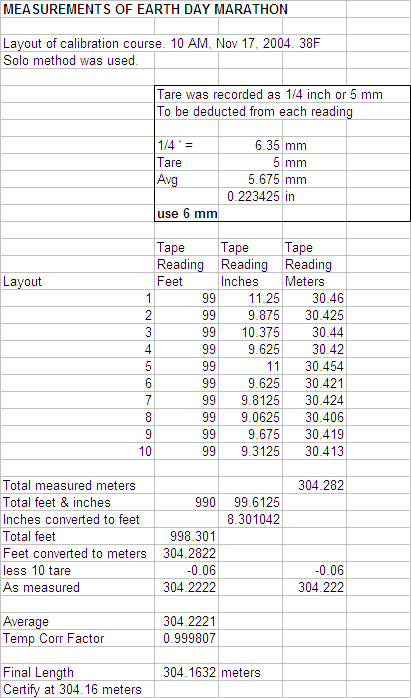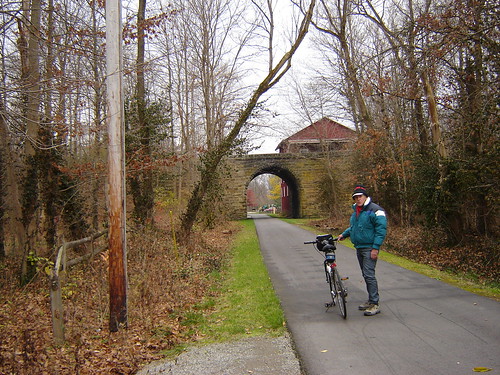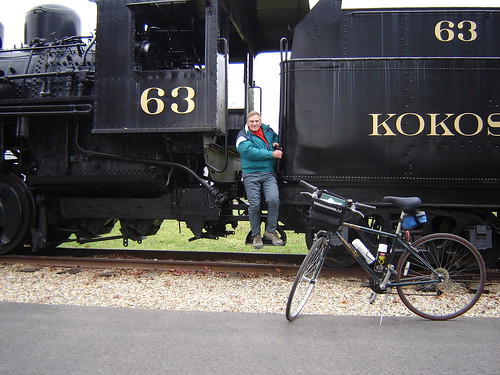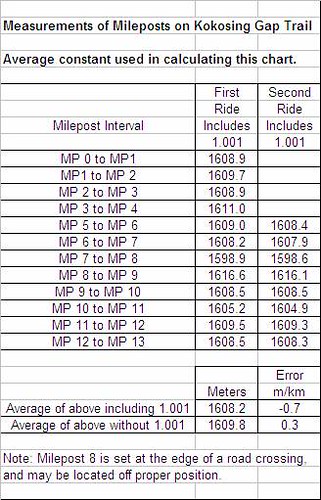Yesterday she called, and we began playing telephone tag. I am still uncertain what she wants, as it’s her turn to call and it’s now the weekend. I think she will want me to measure the course. The course is 60 miles from me, and about a 1:20 drive from home.
Initially I had little enthusiasm for measuring a marathon course, but then I looked up the race online and found that it had been plotted on USATF's "America's Running Routes." The course came out several hundred meters long. I have confidence in that program. What got me more enthusiastic was the fact that over 20 miles of the course is on a rails-to-trails bikeway. I like these, as there are no significant hills. The first mile is in Town A, 4½ miles on the bike path, then 3 miles plus ¼ mile to finish in Town B, and the remainder on the bike path to the TA at town C.
Here’s my plan. See the diagram below:
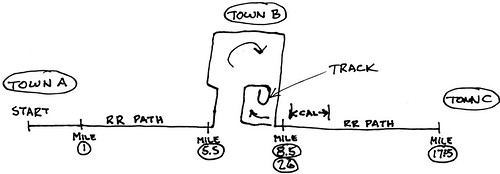
I’ll drive to town B and lay out a cal course on a dead-straight piece of the bikeway. Then I’ll calibrate and measure from Mile 8.5 to the TA at Mile 17.25, and back to Mile 8.5. If I have time and energy left I’ll measure to the finish. Then go home.
Next day I’ll go again to Town B, calibrate, and measure from Mile 8.5 to the start. Now I will know how long the course is. Hopefully it will be a bit oversize, and I will be able to use the existing desired start point. I’ll ride from start to Mile 8.5, laying down splits as I go, recalibrate, and go home. I’ll check my numbers and determine how much I have to shorten the course by moving the TA at Town C.
Third day I’ll go to Town B again, and measure from Mile 8.5 to the adjusted TA, and back to Mile 8.5, laying out splits enroute. When I get back to Mile 8.5 I will have two measurements of the entire course.
I could save a day by assuming that the course is actually a bit too long, but this isn’t a good option, as if I am wrong I’ll have laid out a pile of unusable splits. I believe the start and finish will be pretty well unadjustable, leaving the TA as the only adjustment option
Does anybody see holes in this reasoning? Is there a better way? I like to minimize my riding to save energy. Also, now that the RD has wasted a month making up her mind it is getting toward cold weather, and the days are shorter.
Of course, all of the above assumes that she will actually call back and agree to my terms.

